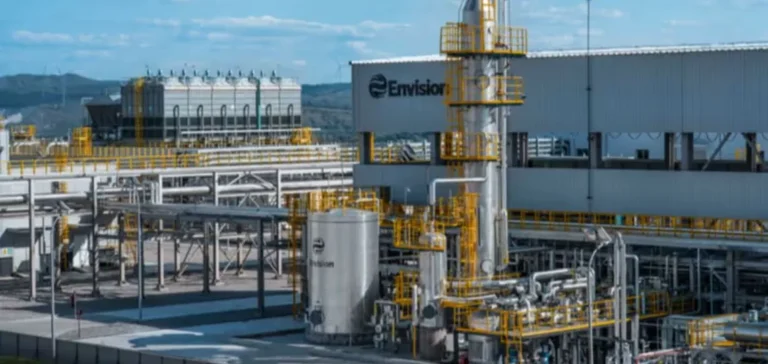The Envision Group, a global player in green technology and energy transformation, has officially commissioned the world’s largest production facility for green hydrogen and ammonia. Located in the zero-emission industrial park of Chifeng, China, this installation is powered by a completely autonomous energy system independent from the public grid and fully integrated with artificial intelligence (AI).
Large-scale production and exports planned from this year
The industrial complex now delivers an annual capacity of 320,000 tonnes of green ammonia. Initial exports are scheduled for the fourth quarter of 2025. According to Envision, this facility represents a significant advancement in industrial-scale decarbonisation due to the unprecedented use of real-time AI-driven energy optimisation techniques.
The plant’s energy system is built around an off-grid renewable infrastructure. It integrates advanced wind turbines, autonomous battery energy storage, and predictive meteorological modelling. This system dynamically balances intermittent solar and wind energy production with the energy requirements of electrolysers and ammonia synthesis, ensuring stable and competitive production without reliance on the public power grid.
Technical innovation and flexible energy storage
For the first time at an industrial scale, Envision is operating an innovative energy storage and load flexibility system. Excess renewable electricity is converted into liquid nitrogen and stored in a dynamic air separation unit. Simultaneously, electrolysers automatically adapt to fluctuations in renewable energy production, dynamically optimising ammonia output.
Envision considers green ammonia an effective solution for transporting and storing hydrogen at scale. The group thus aims to generalise this technology across global heavy industries to address decarbonisation challenges.
Increased ambitions for 2028
By 2028, the industrial park anticipates reaching an annual production of 1.5 million tonnes of green ammonia. This industrial model intends to become a reproducible benchmark at the international level.
According to Lei Zhang, Founder and CEO of Envision, “This facility goes beyond mere technology. Scalable green alternatives now concretely exist at large scale. Green hydrogen is an essential component in achieving net-zero emissions.”






















